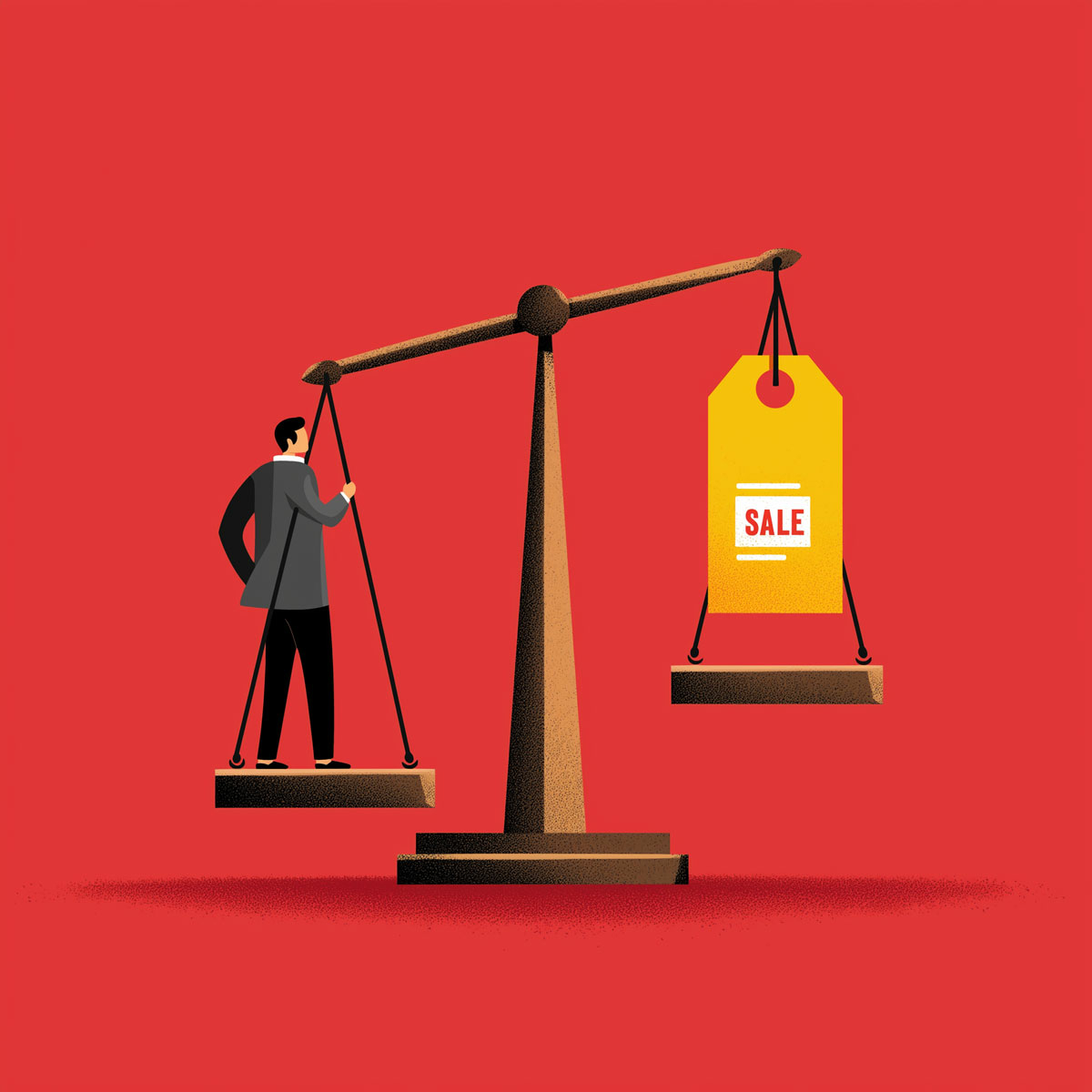Sell Value, Not Discounts
If your belief in price is the only thing that matters, your buyers will believe it too. It’s one of the most dangerous, and most common, beliefs in sales: “I need to have the best price.”
That mindset traps salespeople in discount cycles, kills margins, and trains customers to see them as replaceable.
Here’s the truth: buyers don’t buy the cheapest option. They buy the one that feels most valuable.
But a salesperson who doesn’t believe that, who personally chases the lowest price in their own life, will never be able to sell on value.
Why This Belief Limits You
This belief doesn’t just hurt deals; it shapes your entire sales identity. When a rep believes “price wins,” they unconsciously:
- Lead with discounts instead of outcomes.
- Avoid financial conversations because they feel defensive.
- Assume buyers think the same way they do.
In OMG’s data, only 28% of salespeople are comfortable discussing money — meaning most avoid conversations about budget, ROI, or value altogether. That avoidance costs millions in lost margin every year. (Objective Management Group, 2024). Price pressure isn’t a market problem. It’s a mindset problem.
Shifting to a Supportive Belief
Supportive Belief: “I am willing to pay more for something if I get more value.”
This mindset starts with how you buy, not how you sell. If you personally shop based only on price, you subconsciously validate your customers’ objections. But when you invest in quality tools, services, or experiences because you see the value, you start to understand your buyer’s perspective.
Top-performing salespeople believe deeply in value exchange, that better outcomes deserve better pricing. They transfer that confidence in every conversation.
The Framework: Selling Value with Confidence
- Reframe the Price Conversation
Stop defending your price. Start defining your worth. Explain the measurable business outcomes your solution delivers. - Ask About Cost of Inaction
Shift focus from what your product costs to what doing nothing will cost them.
“What happens if this problem continues six more months?” - Use Comparisons Wisely
Buyers already compare — guide how they do it. Frame the comparison around lifetime value, not upfront price. - Be a Buyer of Value Yourself
Pay for the things that make you more effective — tools, coaching, service. When you live it, you can sell it.
Real-World Example
A manufacturer’s rep once confessed he discounted every deal because “my customers are too price-sensitive.” We challenged him to test one change — keep pricing firm and focus his pitch on reduction in downtime.
His close rate dropped by 10%, but his margin per deal increased by 20%. His revenue grew faster because he stopped racing to the bottom. Confidence became his best sales tool.
Key Takeaway
You can’t sell value if you don’t believe in it yourself. Stop chasing the lowest price. Start believing in the worth of what you offer, and in the people who buy it. When you truly believe value deserves a fair price, your buyers will too.
This belief is one of the 24 Core Beliefs in the EOS-based Sales DNA Framework. Inside the Strategic Sales Council, we explore how these beliefs shape behavior, and how shifting from discounting to value-selling can transform your bottom line





